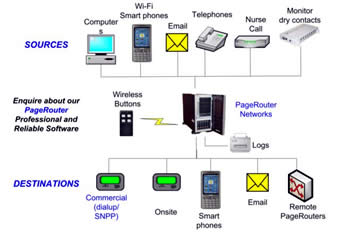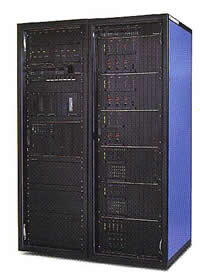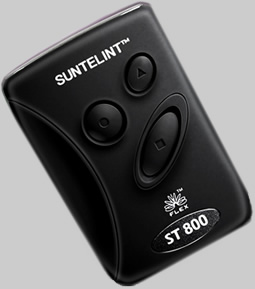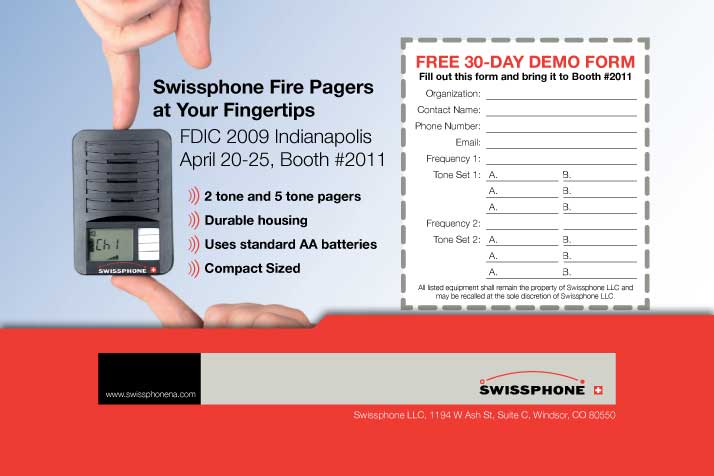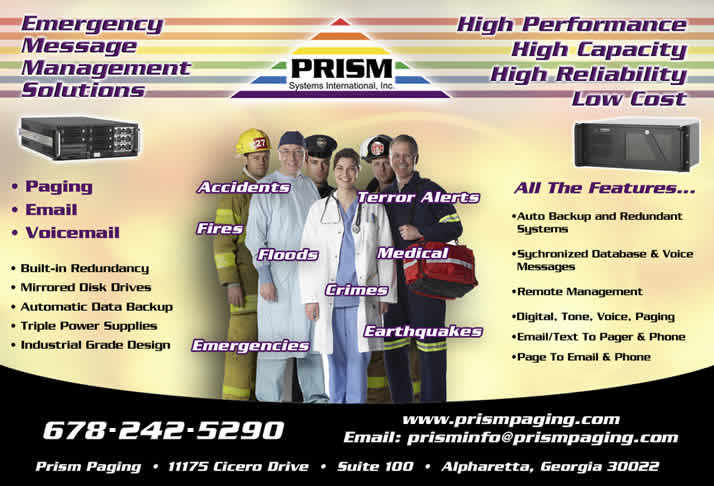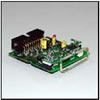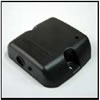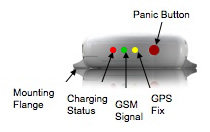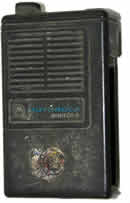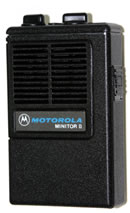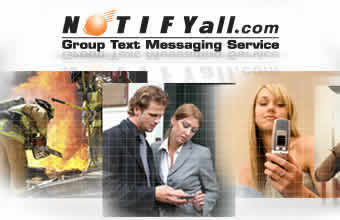BloostonLaw Telecom Update Published by the Law Offices of Blooston, Mordkofsky, Dickens, Duffy & Prendergast, LLP [Selected portions reproduced here with the firm's permission.] www.bloostonlaw.com | Vol. 12, No. 12 | March 25, 2009 |
Obama Taps Adelstein To Head RUS President Obama has announced his intention to nominate FCC Commissioner Jonathan Adelstein as Administrator of the U.S. Department of Agriculture’s Rural Utilities Service (RUS). Commissioner Adelstein was nominated to the FCC on July 10, 2002; confirmed November 14, 2002; and sworn in December 3, 2002. He was renominated to the FCC November 16, 2004; reconfirmed November 20, 2004; and sworn in December 6, 2004. Before joining the FCC, Adelstein served for fifteen years as a staff member in the United States Senate. For the last seven years, he was a senior legislative aide to United States Senate Majority Leader Tom Daschle (D-S.D.), where he advised Senator Daschle on telecommunications, financial services, transportation, and other key issues. Previously, he served as Professional Staff Member to Senate Special Committee on Aging Chairman David Pryor (D-Ark.), including an assignment as a special liaison to Senator Harry Reid (D-Nev.), and as a Legislative Assistant to Senator Donald W. Riegle, Jr. (D-Mich.). Prior to his service in the Senate, Adelstein was a Teaching Fellow in the Department of History, Harvard University, while studying at the Kennedy School of Government. Adelstein also was a Teaching Assistant in the Department of History, Stanford University where he received an M.A. in History and a B.A. with Distinction in Political Science. He also served as a Communications Consultant to the Stanford Graduate School of Business. BloostonLaw congratulates Commissioner Adelstein on his RUS appointment. BloostonLaw contacts: Hal Mordkofsky, Ben Dickens, Gerry Duffy, and John Prendergast. NOTE: The October 2008 edition of Title 47 of the Code of Federal Regulations is available for purchase from Superintendent of Documents, Government Printing Office. This edition includes all amendments to the Commission’s rules from October 1, 2007 through September 30, 2008. FCC Will Accept Comments On Its Consulting Role With Regard To Broadband Grants The FCC has issued a Public Notice, establishing procedures for parties wishing to provide written or oral comments on the Commission’s consultative role in the broadband provisions of the American Recovery and Reinvestment Act of 2009 (ARRA). In the Recovery Act, Congress assigned grant- and loan-making responsibilities to the Department of Commerce’s National Telecommunications and Information Administration (NTIA) and the Department of Agriculture’s Rural Utilities Service (RUS). Specifically, NTIA will administer the Broadband Technologies Opportunities Program (BTOP), which will provide grants for developing and expanding broadband services, and RUS will continue to administer its programs of broadband loans, loan guarantees, and grants with additional funds. The Commission has no funds under the Recovery Act for grant- or loan-making. The Commission does, however, have an important role to play in providing expert, technical advice to NTIA as it establishes the BTOP, and the Commission may also provide expert, technical advice to RUS as it proceeds with its own programs. Congress directed NTIA to consult with this Commission on five specific terms and concepts: - the definition of “unserved area,”
- the definition of “underserved area,”
- the definition of “broadband,”
- the non-discrimination obligations that will be contractual conditions of BTOP grants, and
- the network interconnection obligations that will be contractual conditions of BTOP grants.
Commission staff is attending the relevant hearings being held jointly by NTIA and RUS on the implementation of their Recovery Act programs, and will have access to the written filings made in response to those agencies’ Joint Request for Information. Some parties may wish to provide comment specifically to this Commission on its consultative role on the five definitions listed above. Because the FCC desires that all comments to the Commission on its consultative role be fully disclosed and accessible to the public, and because the Commission has a unique role with regard to consulting on the five definitions, it establishes procedures for parties wishing to comment on the advice the Commission should offer on these terms. The FCC does not seek comment or intend to accept meetings on individual projects or requests for funding, which are within the purview of NTIA and RUS, but rather on the Commission’s consultative role with regard to the five points enumerated above. First, parties wishing to submit written comments may file them on or before April 13, 2009. Comments should reference GN Docket No. 09-40. Parties are encouraged to limit their comments to the five definitional issues named above, and must include an executive summary if their comments exceed 10 pages. In addition, Commission staff will make themselves available for ex parte meetings with interested parties during the week of March 30 through April 3, 2009. Because of the potential volume of meeting requests, meetings will be scheduled for 20 minutes with Commission staff members. Parties are also strongly encouraged to provide staff a one- to two-page handout summarizing their points. Staff will attempt to accommodate requests for ex parte meetings on other dates but interested parties are strongly encouraged to schedule any meetings for the dates mentioned above. BloostonLaw contacts: Hal Mordkofsky, Ben Dickens, Gerry Duffy, John Prendergast, Mary Sisak, and Cary Mitchell. Broadband Grant Meetings Continue; Minimum Speeds, Other Issues Considered The National Telecommunications & Information Administration (NTIA) and the U.S. Department of Agriculture’s Rural Utilities Service (RUS), which are charged with distributing the $7.2 billion in broadband stimulus grants and loans, have been holding a series of hearings in Washington and Las Vegas and Flagstaff, Arizona, to determine the guidelines for grant distribution. Previously, we reported on discussion issues such as eligibility for grants, the role of the states in determining eligibility, coordination, etc. (BloostonLaw Telecom Update, March 18). According to Broadcasting & Cable and FierceBroadbandWireless regarding last Thursday’s meeting in Washington, D.C., which focused on whether NTIA and RUS should set a minimum broadband speed, the basic question was: Should it be 200 kilobits per second (kbps) or something higher? The cable industry argued against any mandatory speeds because it may be at a disadvantage to its telecommunications company competitors. Others argued that setting a low minimum speed would be the only way to ensure that a workable business model is created. The following is from Broadcasting & Cable: An audience member identifying herself as the Montgomery County (Md.) cable administrator, pointed out that the economic stimulus package that contains the broadband grant funds says NTIA should consult with the FCC, but also said NTIA should look beyond its 200 Kbps definition of high-speed and come up with its own definition. She suggested a two-tiered approach, with an "advanced broadband" definition for speeds that would support, say telemedicine, and another for broadband, determined by the minimum advertised broadband commercially available in the state or surrounding areas. Grant proposals would get extra points from the government for the higher "advanced" speeds. Leroy Watson, legislative director for the National Grange, warned about "smoke jumping" standards into areas that would be unsupportable in surrounding communities. But the definitional questions are not confined to speeds. Watson said defining broadband should include demonstrating wider community benefits. For example, he said, while there have been industry failures in broadband deployment, there have been government failures as well. On the telemedicine front, he said that 70% of Medicaid goes to nursing homes. If people could be kept in their homes even one more year, it would be a huge savings. He said coming up with a definition will help define the "tele-something" services that will show the value of broadband. The administration is encouraging potential grantees to think holistically about their grants in terms of things like energy and medicine. Another audience member, identifying himself as being from the first responder community, said that network reliability, redundancy and security needed to be taken into account. According to IDG News Service, “The U.S. government needs to ensure the money is spent wisely and benefits the public,” said Ben Scott, policy director of Free Press at Monday’s meeting. "The federal government is not a charity; it is an investor," Scott said. "What's more, it is a socially responsible investor. Taxpayers put money into broadband infrastructure only insofar as it serves the public interest. It's not a blank check." When the U.S. Congress passed the economic stimulus bill in mid-February, it required the NTIA and the FCC to come up with "nondiscrimination and network interconnection obligations" for organizations that take broadband money from the NTIA. The NTIA was budgeted $4.7 billion of the $7.2 billion that the economic stimulus package included for broadband deployment, with the rest of the money going to the RUS. While the FCC already has interconnection rules and net neutrality guidelines in place, the new rules should go further, said Gigi Sohn, president of Public Knowledge, IDG said. The FCC allows broadband providers to use "reasonable" network management techniques to manage traffic, but Sohn called on NTIA to pre-approve any network management practices used by recipients of the NTIA grants. The current FCC net neutrality guidelines don't address cases where broadband providers prioritize some types of Web traffic over other types, Sohn said. The FCC rules allow broadband customers to access any legal Web content and attach any legal devices to the network, IDG reported Sohn also called on the NTIA to require that grant recipients share their lines with competitors at reasonable rates and to require wireless carriers to allow interconnection with reasonable roaming rates. But representatives of broadband-provider trade groups urged the NTIA to keep its rules minimal, IDG said. The goal of the economic stimulus package was to create jobs and help improve the U.S. economy, and a lengthy debate over rules would delay those objectives, said Chris Guttman-McCabe, vice president of regulatory affairs for CTIA-the Wireless Association, IDG said. "The goal is to stimulate the economy and stimulate broadband deployment to underserved and unserved areas, not spend the next several months debating these issues ... in tortured detail," McCabe said. More rules would slow down the economic benefits in the stimulus bill as well as broadband rollout, added Jonathan Banks, senior vice president for law and policy at the United States Telecom Association. The areas of the U.S. without broadband are often remote or mountainous regions where the costs of building and maintaining networks will be "very, very high," he said. "What we're talking about is building broadband networks and connecting broadband users that are among the most difficult to serve," Banks added. "The idea that we should layer additional or unknown regulations on top of the task of the people who will be getting this grant money is, I think, troubling at best." Jim Stevens, of Village Telecom Management Services in Alaska, suggested that satellite-based service may be the only way to reach some remote areas of the country. Some satellite services have limited bandwidth and need to prohibit bandwidth-heavy applications such as peer-to-peer services, potentially violating net neutrality rules, he said. Banks agreed, noting that some wireless broadband providers may also have limited bandwidth. But, IDG reported, Sohn predicted no shortage of organizations that will be interested in the broadband grants. "I don't share the fear that nobody's going to apply for these grants because of a strong openness requirement," she said. "I think there's going to be people beating down the doors for the money, they'll comply with strong openness requirements, and we'll all be happy." BloostonLaw contacts: Hal Mordkofsky, Ben Dickens, Gerry Duffy, John Prendergast, Mary Sisak, and Cary Mitchell. Certain Private Users Must File FCC Form 499-A; Filing Deadline is April 1, 2009 This is a reminder that providers of “telecommunications services” are required by the Federal Communications Commission (FCC) to file Form 499-A by April 1 of each year. The FCC interprets Section 254(d) to apply not only to “every telecommunications carrier that provides interstate telecommunications services” but also to certain “other provider[s] of interstate telecommunications,” the requirement goes beyond just “common carriers”. This includes, for example, certain Private Mobile Radio Service (PMRS) licensees, such as for-profit paging and messaging services, dispatch services, and two-way mobile radio service. Such for-profit operations are usually noted on your license with a Station Class of FB6, FB6C, FB6I, or similar. If the license indicates that your regulatory classification is “CMRS” (Commercial Mobile Radio Service) or shows the service code as IK or YK, this is a clear indication that the Form 499A requirement must be met. However, even an IG station may be subject to the requirement if it is FB6 or otherwise for-profit. Form 499 is generally filed in order to calculate contributions to the Universal Service Fund (USF), Telecommunications Relay Service (TRS) Fund, the North American Numbering Plan Administrator (NANPA) and the Local Number Portability (LNP) Fund. Filing Form 499-A may also satisfy obligations under section 413 of the Act to designate an agent in the District of Columbia for service of process and obligations to register with the Federal Communications Commission. The TRS, NANPA and LNP aspects of the Form 499A do not apply to PMRS licensees. However, the FCC decided to expand the pool of potential contributors to the Universal Service Fund, by adding for profit private carriers. This was done by invoking the need for “regulatory parity”. Fortunately, certain exemptions to the Form 499-A requirement exist. Specifically, providers that offer telecommunications for a fee exclusively on a non-common carrier basis need not file Form 499-A, if their contribution to the USF would be de minimis under the universal service rules. Section 54.708 of the Commission’s rules states that telecommunications carriers and telecommunications providers are not required to contribute to the universal service support mechanisms for a given year if their contribution for that year is less than $10,000. Nonetheless, the FCC requires such exempt non- common carrier service providers to fill out the FCC Form 499-A (thereby demonstrating de minimis status), and to retain the relevant calculations as well as documentation of their contribution base revenues for three years. To determine if your company is de minimis, it is necessary to multiply the portion of your revenues that are interstate by the universal service contribution factor. If the resulting contribution figure is less than $10,000, the exemption would apply. When it is not clear what portion of your revenues are interstate, certain safe harbor guidelines apply. If the company is not exempt, then it must not only file the Form 499-A, but must also file quarterly Form 499-Q revenue reports. If you have any questions, or you think that your company may qualify for de minimis status under the universal service rules and would like assistance in determining the issue, please do not hesitate to contact John A. Prendergast or Gerry Duffy. If de minimis status does not apply to your company, we can help you prepare and file your Form 499-A by the April 1 deadline. BloostonLaw contacts: Hal Mordkofsky and John Prendergast. KERRY-SNOWE BILL WOULD REQUIRE SPECTRUM INVENTORY: Sen. John Kerry (D-Mass.) and Republican Sen. Olympia Snowe (R-Me.) have introduced legislation requiring the Commerce Department and FCC to make an inventory in six months of how government and private companies are using their airwaves. "Our public airwaves belong to the American people, and we need to make certain we are putting them to good use in the best interests of those citizens," said Mr. Kerry, chairman of the newly reinstated Senate Subcommittee on Communications, Technology and the Internet, in a prepared statement. "We need to make sure we're making as much of (the airwaves) available to innovators and consumers as possible," he said. The legislation is a priority for the wireless industry, which is still looking for more airwaves to scoop up despite an auction last year of TV airwaves that netted the federal treasury upwards of $20 billion. Just a small fraction of U.S. airwaves are used by commercial wireless vendors like AT&T Inc. TV and radio stations use a portion of it but big chunks of airwaves are reserved for use by federal agencies and the military. The idea behind the report is to identify so-called "spectrum squatters" — both government agencies and private companies — which aren't actively using the frequencies for which they hold licenses. If Congress approves the legislation, it would set the stage for the FCC and Commerce Department to try to reclaim the airwaves for future auctions — a task that could be difficult and expensive. The bill, S.649, has been referred to the Senate Commerce Committee. BloostonLaw contacts: Hal Mordkofsky, Ben Dickens, Gerry Duffy, and John Prendergast. NORTEL EXECUTIVES GRANTED $7.3 MILLION IN RETENTION BONUSES: According to Canadian newspapers, U.S. and Canadian courts granted eight top Nortel Networks executives $7.3 million in retention bonuses, even as employees at the bankrupt company were forced to decide between severance pay and their pension plans. Earlier this month, a U.S. court overseeing Nortel's bankruptcy allowed the company to pay $22 million in bonuses the company said it needed to keep 880 employees worldwide. Nortel said that the new executive bonus payments do not include payments to CEO Mike Zafirovski. The company did not say whether Zafirovski will receive some form of alternative compensation. Ontario Superior Court Judge Geoffrey Morawetz approved the new executive bonuses despite protests from a lawyer representing a group of Nortel workers who have been fired but have not received severance pay. Nortel has offered to give fired employees early access to pension plans and provide medical benefits to retirees under the condition that they drop their claims for severance pay in bankruptcy court. Nortel filed for bankruptcy protection in mid-January and has until May to restructure. The company posted a $2.14 billion loss in the fourth quarter and a $5.8 billion loss for all of 2008. Its revenue declined 15 percent year-over-year in the fourth quarter, down to $2.72 billion. It has also been reported that Nortel may offload some of its major units, including its wireless equipment business, instead of trying to remain a whole company. FCC UNVEILS TENTATIVE AGENDA FOR APRIL 8 OPEN MEETING: The FCC has announced a tentative agenda for its April 8 open meeting. Accordingly, the Commission plans to consider: - A Notice of Inquiry on developing a National Broadband Plan, as instructed by the American Recovery and Reinvestment Act of 2009.
- A Report and Order, and 4th Further Notice of Proposed Rulemaking on Improving Data Collection on Minority and Female Broadcast Ownership.
- A supplemental Notice of Inquiry on the FCC’s Annual Assessment of the Status of Competition in the Market for Delivery of Video Programming.
- A Notice of Proposed Rulemaking on Policies to Promote Rural Radio Service and to Streamline Auction, Allotment and Assignment Policies.
- A Report and Order and Further Notice of Proposed Rulemaking addressing miscellaneous Part 90 public safety rules, including the 4.9 GHz band.
BloostonLaw contacts: Hal Mordkofsky, Ben Dickens, Gerry Duffy, and John Prendergast. FCC COMMENCES 2009 EEO AUDITS: On March 23, 2009, the FCC mailed the first of its Equal Employment Opportunity (EEO) audit letters for 2009 to randomly selected radio and television stations. In accordance with the provisions of Sections 73.2080(f)(4) and 76.77(d) of the Commission’s EEO rules, the FCC annually audits the EEO programs of randomly selected broadcast licensees and multi-channel video programming distributors (MVPDs). Each year, approximately 5% of all radio and television stations and MVPDs are selected for these EEO audits. For stations that have a website and five or more full-time employees: The FCC reminds you that you must post your most recent EEO public file report on your website by the deadline by which it must be created, in accordance with 47 C.F.R. § 73.2080(c)(6). This will be examined as part of the audit. Failure to post the required report on a station website is a violation of the EEO Rule and subject to sanctions, including a forfeiture. BloostonLaw contacts: Gerry Duffy and Richard Rubino. HOMELESS CHECK IN WITH CELL PHONES: The Washington Post reports that advocates who work with the D.C. homeless estimate that 30 percent to 45 percent of the people they help have cell phones. A smaller number have e-mail accounts, and some blog to chronicle their lives on the streets. When Laura Zeilinger, deputy director of program operations for the D.C. Department of Human Services, conducted housing assessments of a couple of thousand people living on city streets last summer, she was surprised by how many gave her cell phone numbers and e-mail addresses, according to the Post. "Phones are really a lifeline for many people," said Adam Rocap, director of social services at Miriam's Kitchen, a nonprofit drop-in center for the homeless. During a string of attacks against homeless people sleeping downtown in the fall, two victims called 911 for help after they were assaulted, he said, according to the Post story. But the technology is advancing so quickly that a simple cell phone is fairly cheap. At the Communication Connection, a store at Seventh Street and Florida Avenue NW, Donald Camp sells plenty of pay-as-you-go phones for less than $30. The $29.95 Samsung A500 comes with 200 minutes. The H2O Wireless is $20 with 200 free minutes. There is no bill to pay, the Post reported. Once the minutes are gone, owners can return to the store and add time for about 10 cents a minute. "Sometimes, they pay [for minutes] with cups of coins," Camp said. But in California? Bloggers there go online to map Los Angeles' friendliest and most posh public restrooms, share tips for street hygiene and suggest ways to avoid chronic sunburns, the Post said. MARCH 31: FCC FORM 507, UNIVERSAL SERVICE QUARTERLY LINE COUNT UPDATE. Line count updates are required to recalculate a carrier's per line universal service support, and is filed with the Universal Service Administrative Company (USAC). This information must be submitted on July 31 each year by all rate-of-return incumbent carriers, and on a quarterly basis if a competitive eligible telecommunications carrier (CETC) has initiated service in the rate-of-return incumbent carrier’s service area and reported line count data to USAC in the rate-of-return incumbent carrier’s service area, in order for the incumbent carrier to be eligible to receive Interstate Common Line Support (ICLS). This quarterly filing is due March 31 and covers lines served as of September 30, 2007. (Normally this filing is due March 30, but this year, March 30 falls on a Sunday.) Incumbent carriers filing on a quarterly basis must also file on July 31 (for lines served as of December 31, 2007); September 30 (for lines served as of March 31, 2008); and December 30 (for lines served as of June 30, 2008). BloostonLaw contacts: Ben Dickens, Gerry Duffy, and Mary Sisak. MARCH 31: FCC FORM 525, COMPETITIVE CARRIER LINE COUNT QUARTERLY REPORT. Competitive eligible telecommunications carriers (CETCs) are eligible to receive high cost support if they serve lines in an incumbent carrier’s service area, and that incumbent carrier receives high cost support. CETCs are eligible to receive the same per-line support amount received by the incumbent carrier in whose study area the CETC serves lines. Unlike the incumbent carriers, CETCs will use FCC Form 525 to submit their line count data to Universal Service Administrative Company (USAC). This quarterly report must be filed by the last business day of March (for lines served as of September 30 of the previous year); the last business day of July (for lines served as of December 31 of the current year); the last business day of September (for lines served as of March 31 of the current year); and the last business day of December (for lines served as of June 30 of the current year). CETCs must file the number of working loops served in the service area of an incumbent carrier, disaggregated by the incumbent carrier’s cost zones, if applicable, for High Cost Loop (HCL), Local Switching Support (LSS), Long Term Support (LTS), and Interstate Common Line Support (ICLS). ICLS will also require the loops to be reported by customer class as further described below. For Interstate Access Support (IAS), CETCs must file the number of working loops served in the service area of an incumbent carrier by Unbundled Network Element (UNE) zone and customer class. Working loops provided by CETCs in service areas of non-rural incumbents receiving High Cost Model (HCM) support must be filed by wire center or other methodology as determined by the state regulatory authority. CETCs may choose to complete FCC Form 525 and submit it to USAC, or designate an agent to file the form on its behalf. BloostonLaw contacts: Ben Dickens, Gerry Duffy, and Mary Sisak. MARCH 31: FCC FORM 508, PROJECTED ANNUAL COMMON LINE REVENUE REQUIREMENT FORM: Section 54.903(a)(1) of the FCC's rules requires each rate-of-return incumbent telecommunications carrier to provide information needed to calculate the Projected Annual Common Line Revenue Requirement for each of its study areas in the upcoming funding year to the Universal Service Administrative Company (USAC). This information must be submitted on March 31 each year, in order for the carrier to be eligible to receive Interstate Common Line Support. This collection of information stems from the Commission's authority under Section 254 of the Communications Act. The data in the form will be used to calculate the amount of support, if any, that each reporting carrier is eligible to receive from the Interstate Common Line Support Mechanism. Carriers are permitted to submit a correction to their March 31 projected carrier common line revenue requirements and supporting data from April 1 until June 30 for the upcoming funding year (July 31, 2008, through June 30, 2009). Additionally, on June 30, carriers are permitted to submit an update to the projected data for the ICLS funding year ending on that date. Permitting these revisions to projected data for current and upcoming ICLS funding years will mitigate the lag between projected and actual data filings and give carriers more meaningful opportunities to revise projections to adjust ICLS where necessary. After the June 30 correction deadline each year, any corrections to projected common line revenue requirement and supporting data shall be made in the form of true-ups, using actual cost and revenue data that a carrier must report in FCC Form 509, Annual Common Line Actual Cost Data Collection Form. (This form is due December 31.) If you are unsure whether this applies to you, please contact us. BloostonLaw contacts: Ben Dickens, Gerry Duffy, and Mary Sisak. MARCH 31: ANNUAL INTERNATIONAL CIRCUIT STATUS REPORTS. Carriers are reminded that Section 43.82 of the Commission’s rules requires each facilities- based carrier that provides international telecommunications services to file a Circuit Status Report by March 31, 2008. The report should contain data as of December 31, 2007. The information that must be filed and filing format for the Circuit Status Report is described in detail in the Circuit Status Filing Manual. All facilities-based carriers must file a Circuit Status Report if they had any activated or idle circuits as of December 31, 2007. If carriers did not have any activated or idle circuits as of December 31, 2007, they are not required to file this report or file any letter stating that they have no circuits to report. The Filing Manual requires carriers to report the total number of activated and the total number of idle circuits using the following categories: submarine cable, satellite, and landline (cable or microwave). The Filing Manual defines international facilities-based circuits as “international circuits in which a carrier has an ownership interest. For this purpose, the term ownership interest includes outright ownership, indefeasible right of use (IRU) interests, or leasehold interests in bare capacity in an international facility, regardless of whether the underlying facility is a common or non-common carrier submarine cable or … satellite system.” The Filing Manual further explains that leasehold interests in bare capacity “are distinct from private lines leased from another reporting international carrier.” Thus, any telecommunications carrier that has leased an international circuit from another common carrier, a non-common carrier, or a foreign carrier, other than a lease of private line “service” or “capacity” from a common carrier, must file a Circuit Status Report and include that circuit in its report. Such a circuit should be reported as a facilities-based circuit, and not as a facilities-based resold circuit. Private line resellers should report their resold circuits using the Facility Codes 11, 12 and 13 as specified in the Filing Manual. Facilities-based carriers that are regulated as dominant on particular U.S. international routes under Section 63.10 must provide their circuit status information on a facility-specific basis for the dominant route only. Carriers should provide the information in a separate appendix using the same table format in the Filing Manual, but they should add a column labeled "Facility Name" after "Data field #2". Carriers are reminded to file their reports on compact disc (CD) media. The FCC will not accept reports filed on diskettes. But it will accept Excel files. BloostonLaw contacts: Ben Dickens, Gerry Duffy, and Mary Sisak. APRIL 1: FCC FORM 499-A, TELECOMMUNICATIONS REPORTING WORKSHEET. This form must be filed by all contributors to the Universal Service Fund (USF) support mechanisms, the Telecommunications Relay Service (TRS) Fund, the cost recovery mechanism for the North American Numbering Plan Administration (NANPA), and the shared costs of local number portability (LNP). Contributors include every telecommunications carrier that provides interstate, intrastate, and international telecommunications, and certain other entities( such as private carrier paging and two-way service providers) that provide interstate telecommunications for a fee. These include but are not limited to ILECs, CLECs, resellers, MVNOs, paging companies, CMRS providers (such as cellular, PCS, and SMR providers). Even common carriers that qualify for the de minimis exemption must file Form 499-A. Entities whose universal service contributions will be less than $10,000 qualify for the de minimis exemption. De minimis entities do not have to file the quarterly report (FCC Form 499-Q), which was due February 1, and will again be due May 1. Form 499-Q relates to universal service contributions, but not to the TRS, NANPA, and LNP mechanisms. Form 499-A relates to all of these mechanisms and, hence, applies to all providers of interstate, intrastate, and international telecommunications services. Form 499-A contains revenue information for January 1 through December 31 of the prior calendar year. And Form 499-Q contains revenue information from the prior quarter plus projections for the next quarter. Block 2-B of the Form 499-A requires each carrier to designate an agent in the District of Columbia upon whom all notices, process, orders, and decisions by the FCC may be served on behalf of that carrier in proceedings before the Commission. Carriers receiving this newsletter may specify our law firm as their D.C. agent for service of process using the information in our masthead. There is no charge for this service. BloostonLaw contacts: Hal Mordkofsky, Ben Dickens, Gerry Duffy, and John Prendergast. APRIL 10: DTV EDUCATION REPORT. New 700 MHz licensees from Auction No. 73 are required to file a report with the FCC concerning their efforts to educate consumers about the upcoming transition to digital television (DTV). Last summer, we explained that the FCC’s Part 27 rules require 700 MHz licensees that won licenses in Auction No. 73 to file quarterly reports on their DTV consumer outreach efforts through the Spring of 2009. However, in an apparent contradiction, the same rules do not impose any substantive consumer education requirements on 700 MHz license holders. This situation has not changed. The reporting rule simply states that “the licensee holding such authorization must file a report with the Commission indicating whether, in the previous quarter, it has taken any outreach efforts to educate consumers about the transition from analog broadcast television service to digital broadcast television service (DTV) and, if so, what specific efforts were undertaken.” Many licensees may not have initiated 700 MHz service as of yet. However, to the extent they are also an Eligible Telecommunications Carrier (ETC) and recipient of federal USF funds, separate FCC rules found in 47 C.F.R. Part 54 (Universal Service) require ETCs to send monthly DTV transition notices to all Lifeline/Link-Up customers (e.g., as part of their monthly bill), and to include information about the DTV transition as part of any Lifeline or Link-Up publicity campaigns until March 31, 2009. BloostonLaw contacts: Hal Mordkofsky, John Prendergast, and Cary Mitchell. APRIL 20: FCC FORM 497, LOW INCOME QUARTERLY REPORT. This form, the Lifeline and Link-Up Worksheet, must be submitted to the Universal Service Administrative Company (USAC) by all eligible telecommunications carriers (ETCs) that request reimbursement for participating in the low-income program. The form must be submitted by the third Monday after the end of each quarter. It is available at: www.universalservice.org. BloostonLaw contacts: Ben Dickens, Gerry Duffy, and Mary Sisak. MAY 1: ENFORCEMENT OF RED FLAG RULES BEGINS: The Federal Trade Commission (FTC) last year suspended enforcement of the “Red Flag” Rules until May 1, 2009, to give creditors and financial institutions additional time to implement identity theft programs. Under the new rules, all businesses that maintain a creditor- debtor relationship with customers, including virtually all telecommunications carriers, must adopt written procedures designed to detect the relevant warning signs of identify theft, and implement an appropriate response. The Red Flag compliance program was to have been in place by Nov. 1, 2008. But the FTC will not enforce the rules until May 1, 2009, meaning only that a business will not be subject to enforcement action by the FTC if it delays implementing the program until May 1. Other liabilities may be incurred if a violation occurs in the meantime. The requirements are not just binding on telcos and wireless carriers that are serving the public on a common carrier basis. They also apply to any “creditor” (which includes entities that defer payment for goods or services) that has “covered accounts” (accounts used mostly for personal, family or household purposes). This also may affect private user clients who use radios internally, as well as many telecom carriers’ non- regulated affiliates and subsidiaries. BloostonLaw has prepared a Red Flag Compliance Manual to help your company achieve compliance with the Red Flag Rules. Please contact Gerry Duffy and Mary Sisak with any questions or to request the manual. MAY 1: FCC FORM 499-Q, TELECOMMUNICATIONS REPORTING WORKSHEET. All telecommunications common carriers that expect to contribute more than $10,000 to federal Universal Service Fund (USF) support mechanisms must file this quarterly form. The FCC has modified this form in light of its recent decision to establish interim measures for USF contribution assessments. The form contains revenue information from the prior quarter plus projections for the next quarter. Form 499-Q relates only to USF contributions. It does not relate to the cost recovery mechanisms for the Telecommunications Relay Service (TRS) Fund, the North American Numbering Plan Administration (NANPA), and the shared costs of local number portability (LNP), which are covered in the annual form (Form 499-A) that is due April 1. BloostonLaw contacts: Ben Dickens and Gerry Duffy. MAY 1: RATE INTEGRATION CERTIFICATION. Non-dominant interexchange carriers (IXCs), including facilities- based and resellers, that provide detariffed domestic interstate services must certify that they are providing such services in compliance with their geographic rate averaging and rate integration obligations. An officer of the company must sign this annual certification under oath. The FCC has issued the following guidelines: (1) Any carrier that provides interstate services must charge its subscribers in rural and high-cost areas rates that do not exceed the rates that the carrier charges subscribers in urban areas; (2) to the extent that a carrier offers optional calling plans, contract tariffs, discounts, promotions, and private line services to its interstate subscribers in one state, it must use the same ratemaking methodology and rate structure when offering such services in any other state; (3) an interstate carrier may depart from geographic rate averaging when offering contract tariffs, Tariff 12 offerings, optional calling plans, temporary promotions, and private line services; and (4) carriers may offer optional calling plans on a geographically limited basis as part of a temporary promotion that does not exceed 90 days. But this limited exception does not exempt optional calling plans from geographic rate averaging requirements. Clients with questions about the FCC's detariffing or rate integration requirements should contact us. We have a model rate integration certification letter that may be printed on your letterhead. Blooston- Law contacts: Ben Dickens and Gerry Duffy. MAY 31: FCC FORM 395, EMPLOYMENT REPORT. Common carriers, including wireless carriers, with 16 or more full-time employees must file their annual Common Carrier Employment Reports (FCC Form 395) by May 31. This report tracks carrier compliance with rules requiring recruitment of minority employees. Further, the FCC requires all common carriers to report any employment discrimination complaints they received during the past year. That information is also due on May 31. The FCC encourages carriers to complete the discrimination report requirement by filling out Section V of Form 395, rather than submitting a separate report. Clients who would like assistance in filing Form 395 should contact Richard Rubino. JUNE 30: ANNUAL ICLS USE CERTIFICATION. Rate of return carriers and CETCs must file a self-certification with the FCC and the Universal Service Administrative Company (USAC) stating that all Interstate Common Line Support (ICLS) and Long Term Support (LTS) will be used only for the provision, maintenance, and upgrading of facilities and services for which the support is intended. In other words, carriers are required to certify that their ICLS and LTS support is being used consistent with Section 254(e) of the Communications Act. Failure to file this self-certification will preclude the carrier from receiving ICLS support. We, therefore, strongly recommend that clients have BloostonLaw submit this filing and obtain an FCC proof-of-filing receipt for client records. BloostonLaw contacts: Ben Dickens and Gerry Duffy. JULY 10: DTV EDUCATION REPORT. New 700 MHz licensees from Auction No. 73 are required to file a report with the FCC concerning their efforts to educate consumers about the upcoming transition to digital television (DTV). Last summer, we explained that the FCC’s Part 27 rules require 700 MHz licensees that won licenses in Auction No. 73 to file quarterly reports on their DTV consumer outreach efforts through the Spring of 2009. However, in an apparent contradiction, the same rules do not impose any substantive consumer education requirements on 700 MHz license holders. This situation has not changed. The reporting rule simply states that “the licensee holding such authorization must file a report with the Commission indicating whether, in the previous quarter, it has taken any outreach efforts to educate consumers about the transition from analog broadcast television service to digital broadcast television service (DTV) and, if so, what specific efforts were undertaken.” Many licensees may not have initiated 700 MHz service as of yet. However, to the extent they are also an Eligible Telecommunications Carrier (ETC) and recipient of federal USF funds, separate FCC rules found in 47 C.F.R. Part 54 (Universal Service) require ETCs to send monthly DTV transition notices to all Lifeline/Link-Up customers (e.g., as part of their monthly bill), and to include information about the DTV transition as part of any Lifeline or Link-Up publicity campaigns until March 31, 2009. BloostonLaw contacts: Hal Mordkofsky and Cary Mitchell. JULY 20: FCC FORM 497, LOW INCOME QUARTERLY REPORT. This form, the Lifeline and Link-Up Worksheet, must be submitted to the Universal Service Administrative Company (USAC) by all eligible telecommunications carriers (ETCs) that request reimbursement for participating in the low-income program. The form must be submitted by the third Monday after the end of each quarter. It is available at: www.universalservice.org. BloostonLaw contacts: Ben Dickens, Gerry Duffy, and Mary Sisak. FCC Meetings and Deadlines Mar. 27 – Deadline for reply comments on NOI regarding FCC’s annual video competition report (MB Docket No. 07-269). Mar. 31 – FCC Form 507, Universal Service Quarterly Line Count Update, is due. Mar. 31 – FCC Form 525, Competitive Carrier Line Count Quarterly Report, is due. Mar. 31 – FCC Form 508, Projected Annual Common Line Revenue Requirement Form, is due. Mar. 31 – Annual International Circuit Status Report is due. Apr. 1 – FCC Form 499-A, Telecommunications Reporting Worksheet, is due. Apr. 1 – Revised DTV Consumer Education requirements for ETCs, MVPDs take effect. Apr. 1 – Certain sections of DTV Delay Act Omnibus Order take effect (47 C.F.R. Sections 15.124, 54.418, and 76.1630). Apr. 1 – Deadline for reply comments on auction procedures for Auction No. 79 (FM Construction Permits) (AU Docket No. 09-21). Apr. 2 – Deadline for comments on petition asking whether creditors can send auto messages to certain wireless numbers (CG Docket No. 02-278). Apr. 8 – FCC open meeting. Apr. 10 – Auction 73 winners must file quarterly report covering DTV consumer education outreach efforts for period Jan.-Mar. 2009. Apr. 11 – Deadline for FCC to act on Embarq forbearance petition regarding IP-to-PSTN voice traffic, or have it deemed granted (WC Docket No. 08-8). Apr. 13 – Deadline for comments on FCC’s consulting role on broadband grant program (GN Docket No. 09-40). Apr. 13 – Deadline for reply comments on petition asking whether creditors can send auto messages to certain wireless numbers (CG Docket No. 02-278). Apr. 20 – FCC Form 497, Low Income Quarterly Report, is due. May 1 – FTC begins enforcement of Red Flag Rules. May 1 – Rate Integration Certification is due. May 31 – FCC Form 395, Employment Report, is due. June 12 – DTV Transition. June 13 – DTV Analog Nightlight program begins and runs for 30 days until July 12. |









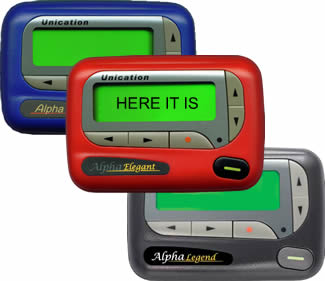
 NEW ALERT AND RINGTONE AMPLIFIER
NEW ALERT AND RINGTONE AMPLIFIER 




